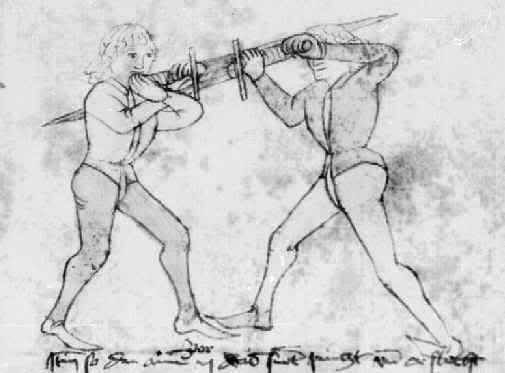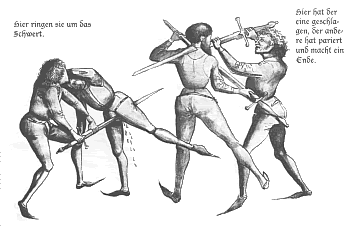In regards to my fantasy writings, I feel I need a more detailed knowledge (i.e. any) of swords. I don't intend to bore my readers to death with precise descriptions of battle stances or names of maneuvers, but I do feel there are all sorts of little details I could use to make my stories more real and involved. Like, say, what advantages a curved sword has over a straight one, whether a family sword can see use through four generations without breaking, basic moves and attacks, just what kind of damage a sword inflicts, and stuff like that.
So far I've used fairly vague descriptions for battle scenes ("It was a clumsy attack, easily evaded, and Kody replied with a sideways slash into his gut, followed by an overhead chop that went through the man's collarbone with little resistance.") but now that a publisher is finally showing an interest in my work, I'm feeling an urge to inject more life and color into my world. Also, I'd hate for my ignorance to show through on page.
If someone history or combat arts buff, or something of the kind, would be willing to communicate with me through PM's or email, or give me a link to a great online source, I would very much appreciate it.
If it makes any difference, my characters mostly use European-style longswords, slightly curved scimitar-like blades and scramsaxes, and generally wear little armor.
So far I've used fairly vague descriptions for battle scenes ("It was a clumsy attack, easily evaded, and Kody replied with a sideways slash into his gut, followed by an overhead chop that went through the man's collarbone with little resistance.") but now that a publisher is finally showing an interest in my work, I'm feeling an urge to inject more life and color into my world. Also, I'd hate for my ignorance to show through on page.
If someone history or combat arts buff, or something of the kind, would be willing to communicate with me through PM's or email, or give me a link to a great online source, I would very much appreciate it.
If it makes any difference, my characters mostly use European-style longswords, slightly curved scimitar-like blades and scramsaxes, and generally wear little armor.




